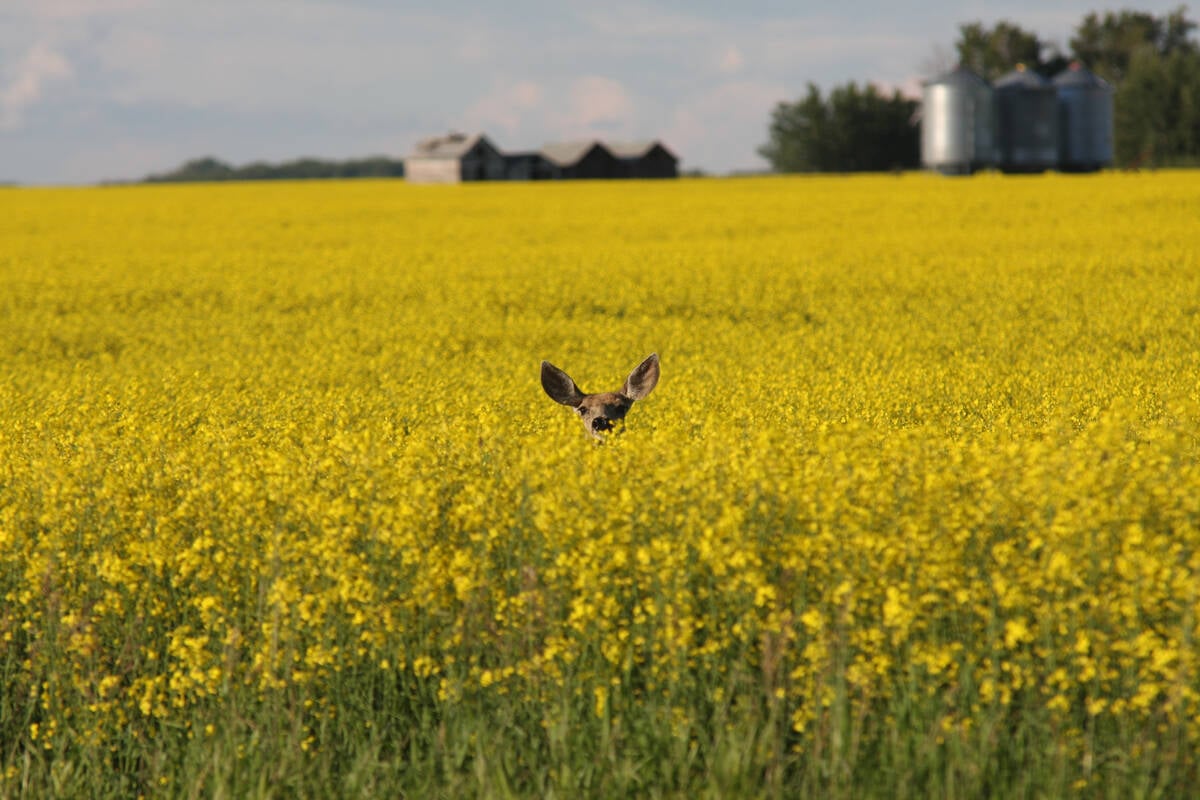Southern Alberta elevators have become like New Brunswick’s famous
reversing falls.
Instead of prairie grain coming into elevators by truck and leaving by
rail, American corn is coming into the elevators by train and leaving
by truck.
“It’s the opposite of what we normally do,” said Ross Affleck, facility
operations manager at AgPro’s Wilson Siding elevator outside Lethbridge.
About one-third of the capacity at Wilson Siding has been designated to
handle American corn brought in for area feedlots. High-priced barley
Read Also

Drones now used to assess wildlife crop damage in Saskatchewan
Wildlife damage in Saskatchewan crops is now assessed by drones and artificial intelligence.
and a shortage of feed grain forced feedlots to look to the United
States for alternatives for the 1.1 million head of cattle on feed in
Alberta and Saskatchewan.
The corn is brought by Canadian Pacific Railway to the elevator from
Minnesota in 50 and 100-car lots.
At the same time, elevator staff must juggle the traditional wheat and
durum deliveries leaving the elevator on rail.
Ron Baier, facility manager of the Agricore United Redcoat elevator at
Grassy Lake, Alta., said 50-car lots of corn are railed in by CPR from
North Dakota to the southern Alberta facility.
The corn is unloaded onto a conveyor belt and elevated into two
2,500-tonne silos. Each silo is designed to hold the equivalent of 25
rail cars of grain. The off-track conveyor belt was built a year ago to
unload rail cars of barley coming in from Saskatchewan and Manitoba for
the feedlot market.
Both Baier and Affleck said they initially heard grumbling from prairie
farmers about bringing in cheap American corn, but as barley has become
more scarce, the complaints have dwindled.
In a year of fewer tonnes of grain going through the elevator because
of drought, the corn is seen as revenue for cash-starved elevator
companies.
“It’s handling. We’re looking at it like work. It’s revenue. It fills a
need,” said Affleck.














